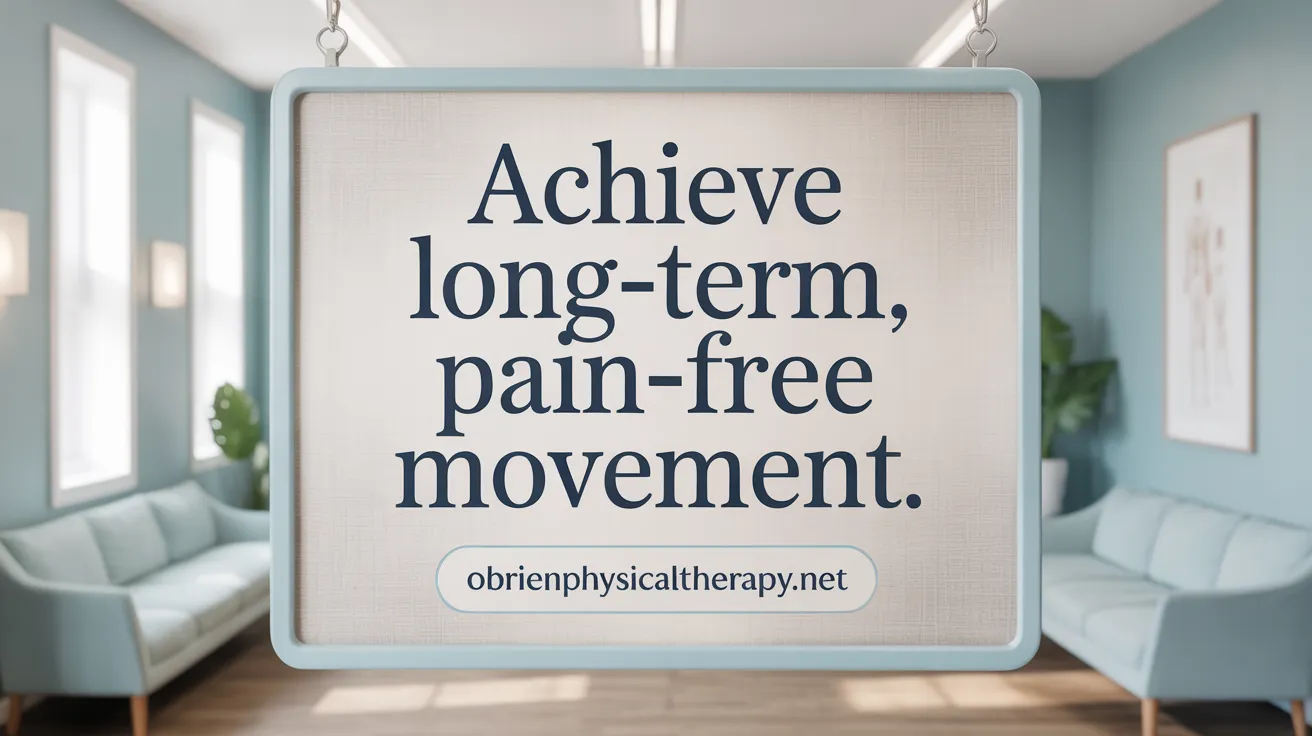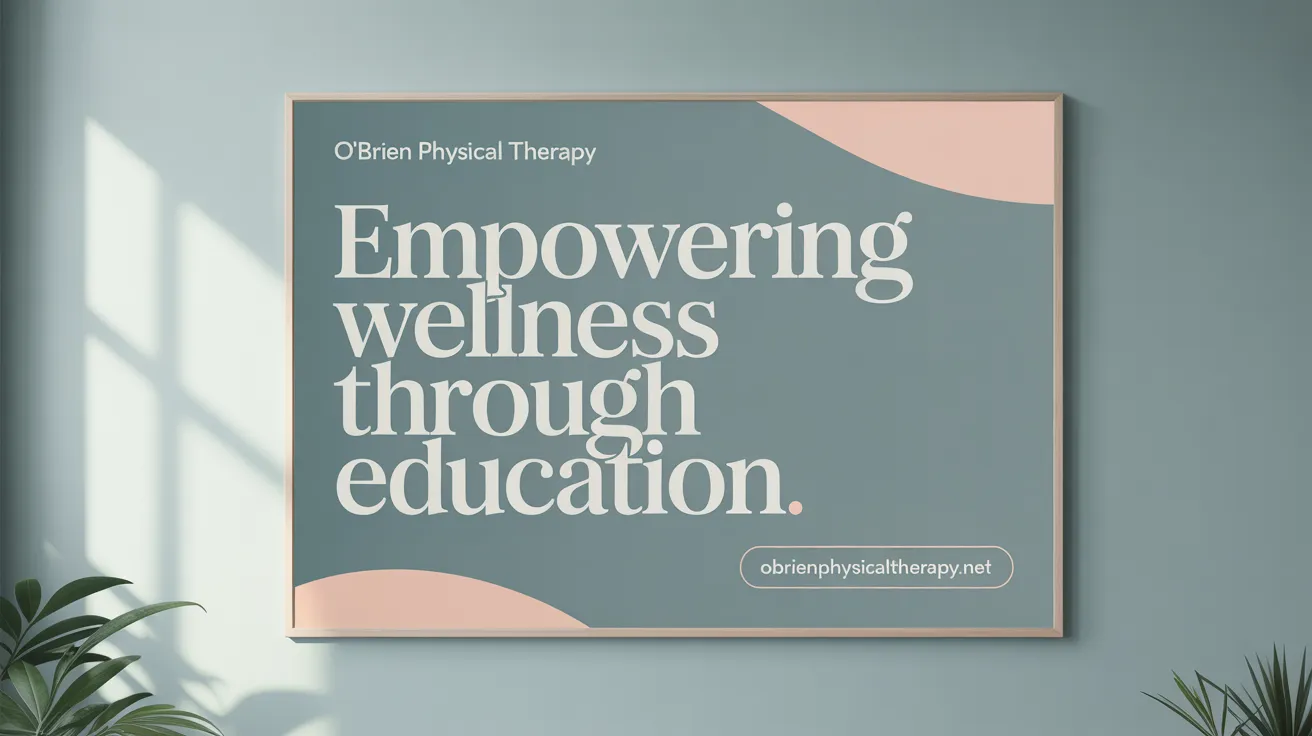Understanding the Role of Physical Therapy in Pain Management
Physical therapy (PT) is increasingly recognized as a cornerstone in achieving long-term, pain-free living. From rehabilitation after injuries or surgeries to managing chronic pain without reliance on medications, PT offers a holistic, science-backed approach. This article explores how physical therapy supports sustainable pain relief, improves mobility, and empowers individuals to reclaim their quality of life through a blend of advanced techniques, education, and personalized care.
<!-- VIDEO:eyJsaW5rIjoiaHR0cHM6Ly93d3cueW91dHViZS5jb20vd2F0Y2g/dj0xNGtXUXI1aHYtMCIsImltYWdlVXJsIjoiaHR0cHM6Ly9lbmNyeXB0ZWQtdGJuMC5nc3RhdGljLmNvbS9pbWFnZXM/cT10Ym46QU5kOUdjUXEwWE5wc1ltZE1iYmU0RkRrc3FhMDA2cnhTUUgtMy1iN0lWVFdXbXhEd1pENiZzIiwidGl0bGUiOiJUaGUgMyBQaWxsYXJzIG9mIFBhaW4tRnJlZSBMaXZpbmc6IEEgUGh5c2ljYWwgVGhlcmFweSBHdWlkZSAuLi4iLCJzbmlwcGV0Ijoi4p6fQ2xpbmljYWwgQ29udmVyc2F0aW9ucyBXaXRoIENocm9uaWMgUGFpbiBQYXRpZW50cyB3aXRoIERyLiBBbGljaWEgLi4uIFN1cHBvcnQg4oCN4pmC77iPIFBUIFBybyBUYWxrIFBvZGNhc3QgaXMgb25seSBwb3NzaWJsZSB3aXRoIHRoZSAuLi4ifQ== -->How Physical Therapy Facilitates Long-Term, Pain-Free Living

How does physical therapy support long-term, pain-free living?
Physical therapy (PT) plays a vital role in promoting enduring relief from pain and improving overall well-being. It begins with identifying and addressing the root causes of pain, such as muscle weakness, poor posture, or joint instability. Through personalized interventions—including specific exercises, manual techniques, and modalities like heat, cold, ultrasound, and electrical stimulation—PT aims to restore proper function and reduce discomfort.
A cornerstone of PT is neuroplasticity—its ability to retrain pain pathways in the nervous system. Guided movement therapies can desensitize pain signals, helping patients manage chronic issues effectively. Moreover, PT emphasizes education on body mechanics, injury prevention, and pain management strategies. This knowledge empowers patients to modify activities and maintain healthy habits, decreasing reliance on medications and decreasing future injury risk.
The practical benefits include improved mobility, increased strength, and enhanced flexibility. These improvements support better physical function and reduce the likelihood of future episodes of pain. Evidence-based research confirms that physical therapy often lowers the need for diagnostic imaging, emergency care, and long-term medication use. Overall, PT not only alleviates current pain but also fosters long-term, sustainable health, enabling individuals to live more active and pain-free lives.
| Aspect | Impact | Additional Details |
|---|---|---|
| Addressing root causes | Long-lasting relief from pain | Through targeted exercises and manual therapy |
| Pain pathway retraining | Reduced chronic pain sensations | Using movement and neuroplasticity techniques |
| Education and prevention | Empowerment to maintain health | Modify activities, improve ergonomics |
| Mobility, strength, flexibility | Enhanced physical capabilities | Reinforces independence and functionality |
| Reducing medication reliance | Safer long-term management | Less dependency on opioid or anti-inflammatory drugs |
| Overall health outcomes | Better quality of life | Fewer doctor visits, better mental health, improved sleep |
Key Benefits of Physical Therapy in Chronic Pain Management

What are the benefits of physical therapy for managing chronic pain?
Physical therapy offers a range of advantages for those suffering from long-term pain conditions. It effectively reduces pain intensity, making daily activities more manageable and improving overall comfort.
One of the main benefits is enhanced mobility and function. Through specialized exercises, manual techniques, and movement retraining, physical therapy helps restore flexibility, strengthen weak muscles, and correct postural issues. This combination supports better movement patterns and reduces strain on joints and soft tissues.
Physical therapy serves as a safe, non-invasive alternative to medication. Instead of relying on drugs that may have side effects, patients can benefit from targeted physical interventions such as ultrasound, heat, cold therapy, massage, and electrical stimulation. These approaches promote healing naturally while minimizing risks.
Addressing the root causes of pain is crucial. A physical therapist assesses posture, muscle strength, and joint mechanics to identify underlying issues, designing personalized treatment plans. These plans often include manual therapy, strength-building exercises, and pain neuroscience education to rewire pain pathways, leading to longer-lasting relief.
Beyond physical benefits, therapy can also improve mental well-being. Many patients experience increased confidence in movement, reduced fear of pain, and decreased anxiety and depression.
Overall, physical therapy enhances long-term quality of life by empowering patients to regain independence, support overall health, and maintain their well-being through tailored, comprehensive care.
Techniques and Scientific Foundations Behind Physical Therapy
What techniques and methods are used in physical therapy for pain relief?
Physical therapy utilizes a diverse range of techniques to reduce pain and restore function. Manual therapy is a cornerstone, including joint mobilization, soft tissue release, myofascial release, and dry needling. These hands-on methods help decrease muscle tension, improve mobility, and alleviate pain.
Therapeutic exercises are tailored to strengthen weak muscles, enhance flexibility, and correct movement patterns. Movement strategies such as graded exposure gradually reintroduce activity, promoting confidence and functional recovery.
Modalities like heat, cold, ultrasound, and electrical stimulation—such as Transcutaneous Electrical Nerve Stimulation (TENS) and interferential therapy—offer immediate pain relief and help control inflammation.
Psychological approaches are integral as well. Pain education, relaxation techniques, and psychologically informed therapy target emotional and cognitive factors contributing to chronic pain. Techniques like dry needling, IASTM (Instrument Assisted Soft Tissue Mobilization), and soft-tissue mobilization are specific treatments targeting musculoskeletal structures.
Together, these methods aim to diminish discomfort, support tissue healing, and restore a patient’s ability to perform daily activities with less pain.
What scientific principles underlie the effectiveness of physical therapy?
The success of physical therapy is rooted in core scientific principles including biomechanics, kinesiology, neuroplasticity, and tissue healing processes. It relies on evidence-based interventions that promote tissue repair, reduce inflammation, and relieve pain.
Manual therapy and modalities like electrical stimulation and temperature treatments directly influence tissue health and function by improving blood flow, decreasing muscle stiffness, and modulating nerve activity.
Therapeutic exercises work by strengthening muscles, improving flexibility, and restoring proper posture and joint mechanics. These activities help prevent future injuries and enhance stability.
A fundamental scientific concept in physical therapy is neuroplasticity — the brain and nervous system’s ability to reorganize itself. PT leverages controlled movement and active engagement to reorganize neural pathways, helping to desensitize pain responses and improve motor control.
By integrating these scientific principles, physical therapy effectively facilitates long-term healing, reduces pain, and promotes optimal movement and function.
| Scientific Principles | Techniques/Methods | Focus Areas |
|---|---|---|
| Biomechanics and Kinesiology | Manual therapy, exercise | Movement correction, joint health |
| Neuroplasticity | Active movement, education | Nerve reorganization, pain desensitization |
| Tissue Healing | Modalities, manual therapy | Reduce inflammation, promote repair |
| Movement Science | Exercise, postural training | Flexibility, strength, stability |
Understanding these underlying principles helps explain why personalized, evidence-based physical therapy approaches yield effective, sustainable outcomes.
Physical Therapy’s Role in Wellness and Pain Education

How does physical therapy contribute to overall wellness and maintenance of mobility?
Physical therapy is a cornerstone in promoting overall health and preserving mobility throughout life. It achieves this through personalized exercise programs that focus on building strength, increasing flexibility, and enhancing coordination. These tailored routines help individuals recover from injuries, manage chronic conditions, or cope with neurological disorders, reducing pain without the need for surgery or medication.
Manual therapies, combined with physical stimulation techniques like ultrasound or electrical nerve stimulation, further support recovery. Education provided by physical therapists helps individuals understand their bodies, encouraging active participation in their wellness journey. This proactive approach not only restores independence but also prevents new injuries.
Moreover, PT plays a significant role in injury prevention by screening for muscular weaknesses and correcting posture. It develops strategies, especially for the elderly and athletes, to minimize fall risks and physical strains. Emphasizing both treatment and prevention, physical therapy nurtures a holistic health approach, helping people maintain mobility, avoid disability, and sustain an active, healthy lifestyle.
What role does education in physical therapy play in non-drug, long-term pain management strategies?
Education is a fundamental aspect of physical therapy in managing long-term pain without medication. It provides patients with a clear understanding of how pain functions, including insights into neuroplasticity—the brain's ability to reorganize itself—and the differences between acute and chronic pain pathways.
By empowering patients with knowledge about their pain, PT encourages self-management techniques such as pacing activities, stress management, and engaging in appropriate exercise routines. This approach helps reduce reliance on drugs and aims at addressing the root causes of pain, promoting sustainable recovery.
Effective educational methods are personalized, considering each patient's psychosocial and environmental contexts. Therapists use active listening and peer-sharing strategies to foster engagement. These methods support patients in becoming active participants in their healing process.
Ultimately, physical therapy education shifts the focus from passive treatments to active self-care, leading to better long-term pain control and improved quality of life. Patients learn to interpret their symptoms, modify activities, and maintain healthy lifestyle habits, making pain management more effective and enduring.
Integrating Physical Therapy into Long-Term Pain Treatment Plans
 Physical therapy plays a vital role in incorporating long-term strategies to manage chronic pain effectively. Tailoring programs to each patient's unique needs involves designing personalized and goal-oriented plans. These plans focus on addressing the core causes of pain through comprehensive assessments followed by manual therapy and exercises suited to individual capabilities.
Physical therapy plays a vital role in incorporating long-term strategies to manage chronic pain effectively. Tailoring programs to each patient's unique needs involves designing personalized and goal-oriented plans. These plans focus on addressing the core causes of pain through comprehensive assessments followed by manual therapy and exercises suited to individual capabilities.
An essential aspect of integration is patient education. Therapists provide guidance on proper posture, ergonomics, and body mechanics. This knowledge empowers patients to actively participate in their recovery, adopt healthy habits, and prevent future issues.
Achieving optimal results often requires a multidisciplinary approach. Collaboration among physical therapists, physicians, psychologists, and other healthcare professionals ensures a holistic treatment plan that considers both physical and emotional factors of pain.
Active treatments such as strength training, stretching, and graded exposure combined with modalities like heat, cold, or electrical stimulation deliver immediate relief and encourage progress over time.
Long-term planning also emphasizes reducing medication reliance. Through effective physical therapy interventions, patients can improve mobility and function naturally, decreasing dependence on drugs and minimizing side effects.
Sustainable self-care practices are encouraged to maintain gains achieved during therapy. Patients learn exercises and strategies that they can incorporate into everyday life, which sustains pain relief and enhances overall wellbeing.
In summary, integrating physical therapy into a comprehensive, patient-centered pain management plan provides long-lasting benefits. It promotes autonomy, improves quality of life, and helps individuals manage pain more effectively throughout their lives.
The Pathway to Sustainable, Pain-Free Living
Physical therapy stands out as a fundamental strategy for those seeking lasting relief from pain without heavy reliance on medications or invasive procedures. Through a personalized, evidence-based approach combining therapeutic techniques, education, and holistic wellness strategies, PT empowers individuals to address the root causes of their pain and maintain optimal mobility. Integrating physical therapy into long-term pain management plans fosters independence, restores function, and promotes quality of life. Embracing physical therapy means investing in your body’s resilience and paving the way to a healthier, pain-free future.
References
- Pain-free living starts with physical therapy, but only if you don ...
- How Physical Therapy Can Help Manage Chronic Pain ...
- Relief Through Movement: Physical Therapy for Chronic Pain
- How Physical Therapy Can Help You Overcome Chronic ...
- 5 Holistic Ways To Quell Pain With Physical Therapy
- 🏃♀️ How Physical Therapy Helps with Chronic Pain ...
- Pain Relief Through Physical Therapy
- Physical Therapy Benefits for Pain Treatment
